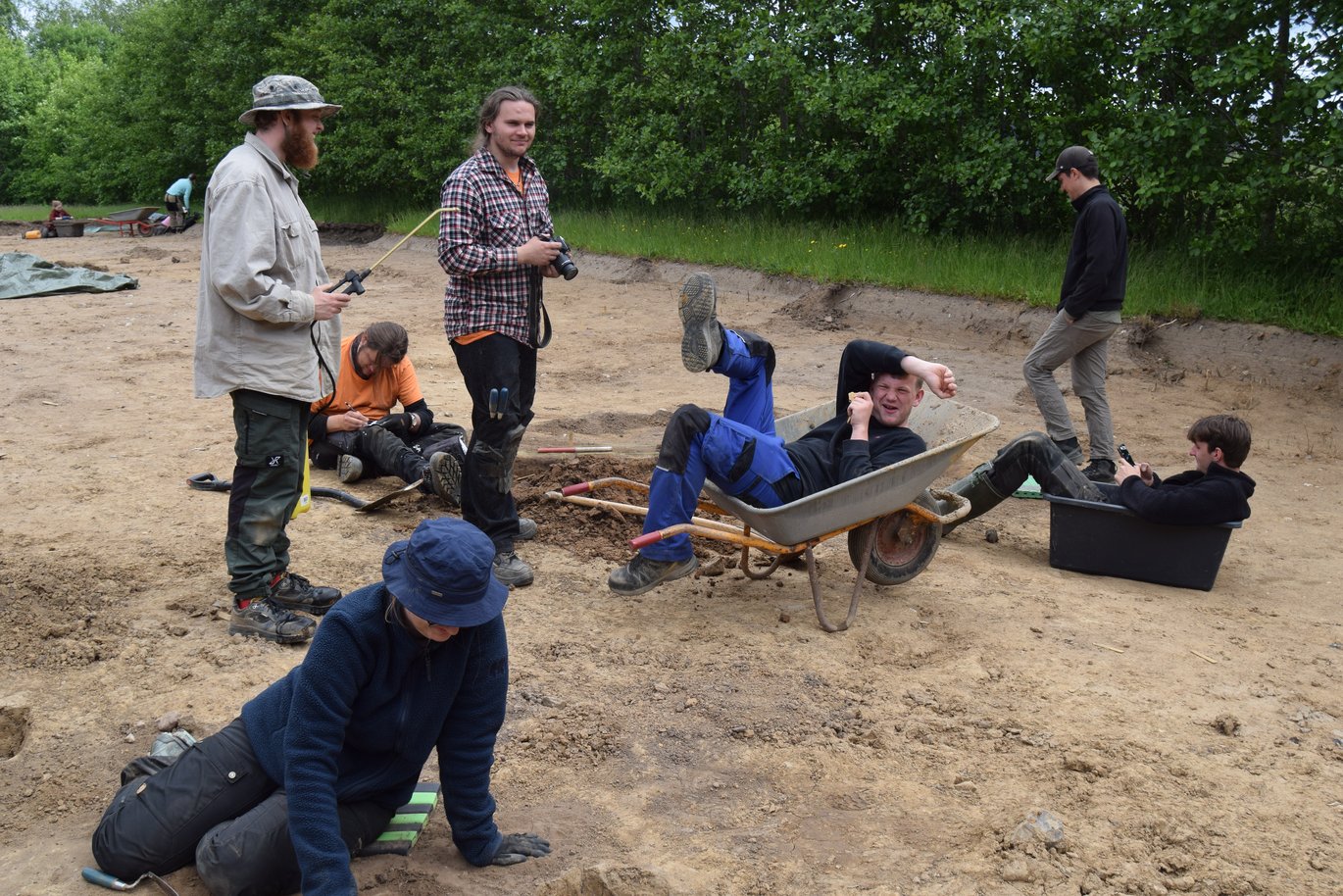Emotional science: Teaching archaeological practice in the field
Returning from three weeks heading a training excavation for second-semester archaeology students from Aarhus University, UrbNet Associate Professor Sarah Croix reflects on what is a life-changing experience for many of the participants.

Archaeology’s popularity in Denmark means that journalists routinely visit and report on ongoing archaeological excavations, especially if they take place at iconic localities and even more so if they have something to do with Vikings. This year’s student training excavation at Erritsø near Fredericia was no exception. Unusually, it was not the lure of reporting on finds which would “rewrite Danish history” that prompted the local journalist’s inquiry. Instead, he was interested in hearing about the excavation from the students’ perspective, the story's angle being what it meant for them on a personal level. The article was published in Danish, its title reading in English: "I held my breath as my hand was shaking, and the adrenaline was pumping: In the mud of Erritsø, Eskild made his first find”.
Most archaeological fieldwork in Denmark occurs in the frame of commercial archaeology: developer-led excavations following routine and, at times, even somewhat mechanized practices. Research-led excavations, which are generally more complex in terms of research and methodological design, are the exception. This second season of the training excavation at the Viking-Age chieftain site of Erritsø and its outskirts, conducted in collaboration between Aarhus University and the Vejle Museums, offered a combination of the two. The archaeological remains and the excavation methods employed were closely similar to those of most developer-led archaeology. However, its results had a high research potential in understanding modes of production and social structures at an important traffic point between land routes and waterways in the context of the emergence of the Danish kingdom in the Viking Age.
Between the mechanized field practice on the one hand – which is far from void of reflection and interpretation – and the scientific outlook of the project on the other, a student training excavation has a third dimension that experienced practitioners may have forgotten over the years: the intense emotion of the first find. Regardless of the aesthetic quality of the find – or whether it would be suitable as a tattoo design, as some students at Erritsø hoped for – the object carries a stronger emotional value than the fill of a sunken-featured building or the outline of a post-built house. Someone had made the object, used it and forgotten it until someone else retrieved it 1200 years later.
A student training excavation is, for most participants, their first field experience – and, among them, their first experience of physical work in the rain and of community living over three intense weeks. It is also a decisive moment in the course of their studies. The students’ original motivation for choosing archaeology are multiple, but their knowledge on what archaeology is about mostly stems from popular culture or family hobbies. Three weeks in the field, even at a mellow pace in comparison to most developer-led excavations, often act as a revelation, confirming a vocation or prompting thoughts about alternative contributions to archaeology and cultural heritage than through fieldwork, for example, via public outreach.
Contrary to most university teaching, archaeological field practice engages the body as well as the mind. It is the first time students are confronted with an experience potentially changing their own life path, and with the collapsing of the historical continuum in the fact of holding an object no one had held for more than a thousand years. As a teacher, student training excavations are extremely rewarding, not only for their research potential. One is the primary witness of the students’ extremely steep learning curve, and of how they tackle this emotional roller-coaster. So thank you very much, Eskild, for reminding me of this.
Link to the article in Fredericia Dagblad: https://frdb.dk/artikel/jeg-holdt-vejret-mens-min-h%C3%A5nd-rystede-og-adrenalinen-pumpede-i-errits%C3%B8s-mudder-gjorde-eskild-sit-f%C3%B8rste-fund
